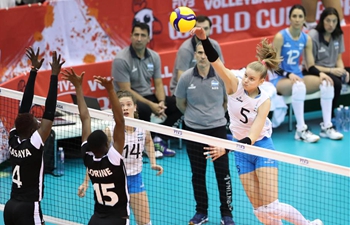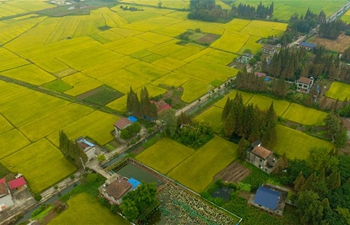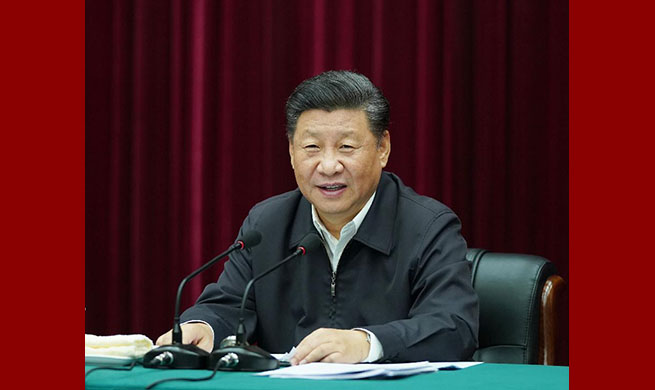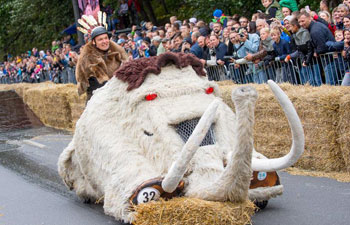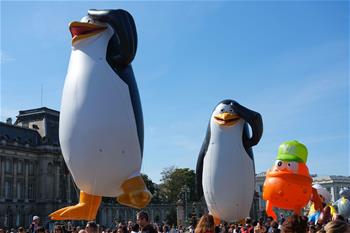CHICAGO, Sept. 19 (Xinhua) -- Certain human gut microbes with links to health thrive when fed specific types of ingredients in dietary fibers, according to a study from Washington University School of Medicine in St. Louis.
In an effort to understand which types of fiber promote the representation of different types of beneficial microbes in the human gut, and the nature of their active ingredients, the researchers screened 34 types of fiber provided by the food company Mondelez International. Their list included fibers often discarded during food manufacturing, such as fruit and vegetable peels and grain husks.
The researchers began by colonizing mice raised under sterile conditions with a collection of gut bacteria species they had cultured from a healthy human. The genomes of these organisms were sequenced to inventory their genes. Groups of mice containing this model human gut community initially were fed a base human diet high in saturated fats and low in fiber.
The researchers then screened 144 derivative diets containing different types and amounts of fiber supplements. The investigators monitored the effects of the added fibers on levels of members of the model gut community, as well as expression of the proteins encoded by their genomes.
"Microbes are master teachers," said senior author Jeffrey I. Gordon, a professor at the university. "The microbial genes that respond to the different fibers provided an important clue as to what kinds of molecules in a given type of fiber a given community member preferred to consume."
"Our screen identified food-grade fibers that selectively affected different species belonging to a group of bacteria known as Bacteroides. Our experiments showed that in pea fiber, the active molecular constituents included a type of polysaccharide called arabinan, whereas in citrus pectin recovered from orange peels, another type of polysaccharide called homogalacturonan was responsible for expansion of the bacteria," said first author Michael L. Patnode, a postdoctoral researcher at the university.
The researchers uncovered interactions between gut bacterial species that help explain the selective effects of fibers on Bacteroides species. It turns out that some of the Bacteroides in their community directly compete with each other to consume components of dietary fibers, while others defer to their neighbors.
To dissect these relationships, the researchers created artificial food particles consisting of different types of magnetic, microscopic glass beads. Each type contained a given fiber-derived polysaccharide bound to the bead's surface together with a given type of bound fluorescent label. The collection of different bead types was introduced simultaneously into the intestines of different groups of mice, with or without intentional omission of one or more of its Bacteroides members.
Food particles then were recovered after passage through the intestines of these animals, and the amount of polysaccharide remaining on the particles surfaces was measured.
"These artificial food particles acted as biosensors, allowing us to decipher how inclusion or omission of Bacteroides influenced the community's ability to process the different polysaccharides present on the different beads," Patnode said. "Moreover, we were able to monitor fiber degradation in different diet contexts."
The researchers then identified fibers that selectively increase the abundance of beneficial microbes and tracked down the bioactive components of fibers responsible for their effects.
Nutrient-containing artificial food particles could not only be used as biosensors to define the functional capabilities of a person's microbial community, but also could help food scientists develop methods for producing more nutritious foods containing different combinations of health-promoting bioactive fiber components, the researchers noted.
The study was published Thursday in the journal Cell.




